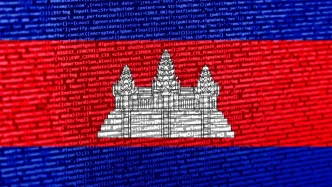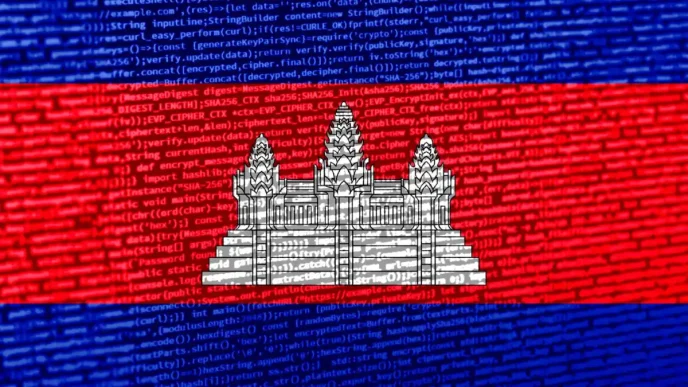As Vietnam navigates the complexities of 2025, the nation stands at a pivotal moment in its political evolution. With global economic pressures mounting and domestic calls for reform growing louder, the Communist Party of Vietnam (CPV) faces unprecedented challenges in balancing ideological continuity with the demands of a rapidly changing society. Recent developments suggest that this year could be a turning point, with policy decisions likely to shape the country’s trajectory for decades to come.
Economic Pressures and Policy Dilemmas
Vietnam’s economy, long a driver of national pride with consistent growth rates, is grappling with external headwinds. Rising inflation and supply chain disruptions have placed strain on key industries such as manufacturing and agriculture, which employ millions. Official reports from the Ministry of Planning and Investment indicate that export growth slowed to 3.2% in the first quarter of 2025, a sharp decline from the previous year’s 6.8%. This slowdown has sparked debates within the CPV about whether to double down on state-led initiatives or embrace more market-oriented reforms.
Analysts suggest that the government may consider loosening restrictions on foreign investment to stimulate growth, though such moves could provoke resistance from hardline factions within the party. “We are at a crossroads where economic necessity might force ideological compromise” said Dr. Tran Minh, an economist based in Ho Chi Minh City, during a recent panel discussion hosted by Vietnam News. If confirmed, such shifts could redefine Vietnam’s role in the global economy, though they also risk widening internal divisions over the pace and scope of reform.
Adding to the complexity is the cost of living crisis affecting urban centers like Ha Noi and Ho Chi Minh City. Reports indicate that the price of basic goods has risen by nearly 5% since January 2025, with families spending an average of 2.5 million Vietnamese Dong (US$100) more per month on essentials. This economic squeeze has not gone unnoticed, with public frustration evident in social media discussions and small-scale protests in industrial zones. While the government has promised subsidies for low-income households, the rollout has been slow, raising questions about administrative capacity.
Domestic Calls for Reform
Beyond economic concerns, there is a growing undercurrent of demand for political transparency and accountability. Younger generations, particularly those in urban areas, are increasingly vocal about issues such as environmental degradation and digital rights. The CPV’s tight control over media and online spaces, reinforced by the 2018 Law on Cybersecurity, has drawn criticism from activists who argue that it stifles dissent. Posts on X from local users reflect a mix of frustration and cautious hope, with many calling for dialogue rather than confrontation.
One flashpoint has been the government’s handling of environmental policies. Industrial pollution in the Mekong Delta has displaced thousands of farmers, prompting accusations of negligence. “Our rivers are dying, and no one in power seems to care” said Nguyen Thi Lan, a community leader from Can Tho, in an interview with a local outlet. While the government has pledged to invest 500 billion Vietnamese Dong (US$20 million) in cleanup efforts, skepticism remains about whether these funds will reach the most affected areas. If mismanaged, this issue could further erode public trust.
At the same time, the CPV is preparing for its mid-term congress later in 2025, an event that could signal shifts in leadership or policy direction. Speculation is rife about whether younger, reform-minded figures will gain prominence, though no official announcements have been made. Political observers note that any changes will likely be incremental, given the party’s emphasis on stability. “Vietnam’s political system prioritizes consensus over radical change” said Professor Le Van Cuong of Ha Noi National University. Without concrete evidence of internal debates, such predictions remain speculative, but they underscore the stakes of the upcoming congress.
Regional and Global Dynamics
Vietnam’s political challenges are not unfolding in isolation. The country’s strategic position in Southeast Asia places it at the center of geopolitical tensions, particularly in the South China Sea. Recent joint military exercises with ASEAN partners signal a desire to bolster regional alliances, but they also highlight the delicate balance Vietnam must strike between asserting its sovereignty and avoiding escalation with larger powers. The Ministry of Foreign Affairs has reiterated its commitment to a rules-based international order, though specifics on how this will be achieved remain vague.
Economically, Vietnam is also navigating its role in global trade networks. The nation’s participation in agreements like the Regional Comprehensive Economic Partnership (RCEP) has boosted exports, but it has also exposed vulnerabilities to fluctuations in demand from major markets like the United States and China. With tariffs and trade barriers looming as potential risks, policymakers are under pressure to diversify trade partnerships. A recent report from the World Bank suggests that deepening ties with the European Union could provide a buffer, though negotiations on key issues like labor standards remain unresolved.
Closer to home, Vietnam watches developments in neighboring countries with keen interest. Political instability in Myanmar and economic challenges in Laos serve as reminders of the fragility of regional stability. While Vietnam has historically positioned itself as a mediator in ASEAN disputes, its capacity to influence outcomes may be tested in 2025. “We cannot afford to be passive when our neighbors face crises” said a senior diplomat speaking anonymously to Reuters. Such statements reflect a growing awareness of the interconnectedness of regional challenges, though actionable policies have yet to emerge.
Social Cohesion and the Path Forward
Perhaps the most pressing issue for Vietnam’s leadership is maintaining social cohesion amid these overlapping crises. The CPV has long relied on its narrative of national unity to legitimize its rule, but cracks are beginning to show. Rural-urban disparities, generational divides, and ethnic tensions in border regions like the Central Highlands all pose risks to this narrative. Government initiatives to address inequality—such as a 300 billion Vietnamese Dong (US$12 million) program for rural infrastructure—have been met with cautious optimism, though implementation delays have tempered expectations.
Education and youth engagement are also critical battlegrounds. With over 60% of Vietnam’s population under the age of 35, the government faces pressure to create opportunities that match the aspirations of a tech-savvy, globally connected generation. Programs to promote digital literacy and entrepreneurship have been rolled out in cities like Da Nang, but rural areas lag behind. “We want to be part of Vietnam’s future, but we need the tools to get there” said Hoang Anh, a 22-year-old student from Quang Nam province. Bridging this gap will be essential if the CPV hopes to retain the loyalty of its youngest citizens.
Public health, too, remains a concern following lessons learned from past pandemics. While Vietnam’s response to global health crises has been widely praised, budget constraints have limited investments in rural healthcare facilities. With an aging population and the potential for new infectious diseases, experts warn that the system could be overwhelmed without proactive measures. The Ministry of Health has allocated 200 billion Vietnamese Dong (US$8 million) for hospital upgrades in 2025, but critics argue that this is a drop in the bucket compared to the scale of need.
Looking Ahead
As Vietnam moves deeper into 2025, the interplay of economic, political, and social challenges will test the resilience of its governance model. The CPV’s ability to adapt without compromising its core principles will be under scrutiny, both domestically and internationally. For now, the nation watches and waits, with citizens and leaders alike grappling with the question of what Vietnam’s future should look like.
Whether through incremental reforms or bolder steps, the decisions made in the coming months will reverberate far beyond Ha Noi’s political corridors. As one resident put it during a street interview in Ho Chi Minh City, “We are ready for change, but it has to be change we can believe in.” The path forward remains uncertain, but the stakes could not be higher.














